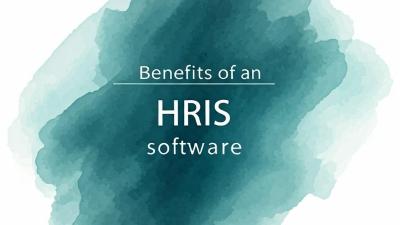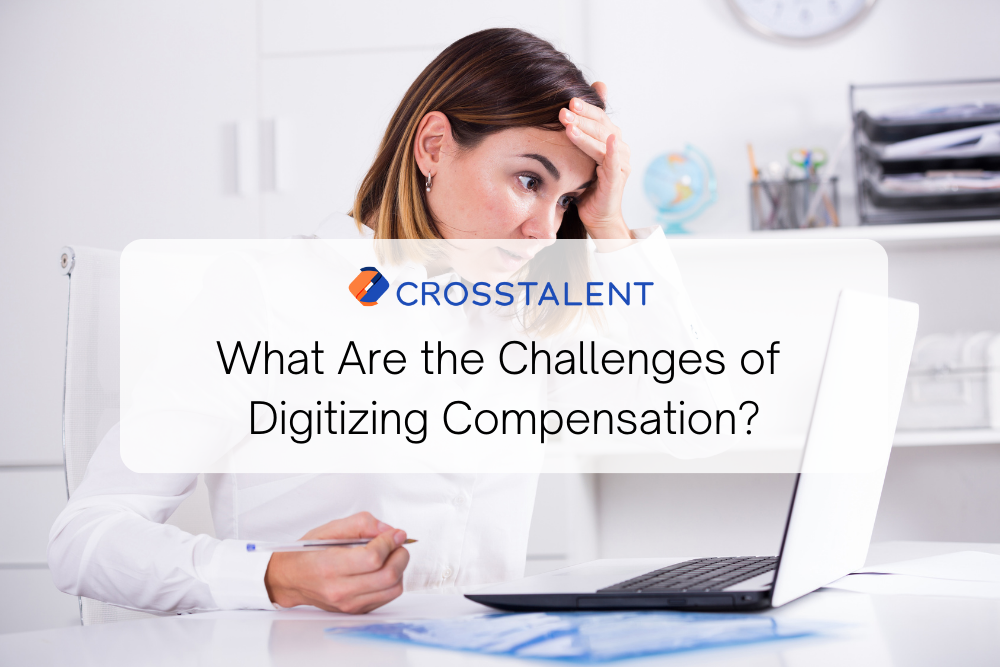Digitizing the HR function is one of the major challenges faced by many companies nowadays. However, HR digital transformation is the foundation for companies that wish to improve their performance, employer brand, and talent retention.
While deploying HRIS software offers many advantages for companies and employees alike, it can also cause some disadvantages. It is essential to identify these disadvantages to control and even limit them as much as possible.
In our article, we examine the pros and cons of adopting HRIS software so that you can make the most of it.
What Are the Main Functionalities of HRIS Software?
Human Resources Information System (HRIS) software is an interface made up of multiple software solutions that enable the management and automation of various human resources (HR) functions.
Its main benefits are to free HR staff from time-consuming, low-value-added tasks and to make all HR data secure and reliable. These can be implemented in the following HR functions:
- Administrative management of personnel, from entry to exit
- Centralized and automated recruitment and onboarding process
- Time and attendance management
- Payroll management
- Employee training
- Talent and performance management
Most of today’s HRIS systems are fully modular and customizable, enabling them to be perfectly adapted to a company’s needs.
What Are the Benefits of an HRIS Software?

While the possibilities and functionalities offered by HRIS software are varied, their advantages can be grouped in the following areas.
1. Automation, Optimization, and Standardization of HR Processes
This is one of the first known and expected benefits of an HRIS system. The deployment of HRIS software will primarily aim to automate the most basic HR function tasks, such as:
- Payslip management (make entry, edit, calculation, and payout process)
- Entering and updating personnel databases
- Information mailings
Generally, HRIS software is designed to automate repetitive and time-consuming tasks. The larger your workforce, the more time you’ll save.
To see whether you need HRIS software, ask yourself:
- How much time do you spend each month preparing the payroll?
- How much paperwork do you send daily, weekly, monthly, and annually?
- How much is the postage cost to deliver letters and other administrative documents to your employees?
With HRIS, you can do all these things in the blink of an eye, with just one click or sometimes two.
And that’s not all. HRIS software will also help to optimize and standardize HR processes and procedures (notably by eliminating the risk of errors associated with multiple data entries). These two aspects, in turn, will generate higher productivity for both employees and HR department staff and will also contribute to employee well-being.
2. Increased Productivity
While automation of HR administrative tasks is a key driver of increased productivity within HR departments, it’s just the tip of the iceberg. An HRIS system offers a comprehensive solution beyond automating repetitive tasks.
Here’s how a robust HRIS empowers your team:
- Simplified Data Entry: User-friendly interfaces and intuitive data entry processes minimize errors and streamline information gathering.
- Effortless Information Flow: Real-time data updates ensure everyone can access the most current information, facilitating collaboration and informed decision-making.
- Elimination of Data Re-Entry: Streamlined workflows eliminate the need for manual data entry across various systems, freeing up valuable time for more strategic HR initiatives.
These combined benefits contribute to a natural and significant increase in productivity across the entire HR department.
Let’s take vacation requests as an example. In an organization without HRIS software, requesting time off will follow a long and bumpy road. First, the employee must search for the Holy Grail: the famous request form. After careful calculation and lengthy research into the days of leave remaining, those that can be earned between now and the day of the request, the number of hours that can be recovered, etc., the request is finally ready.
But who to send it to?
After one or two trips back and forth, the leave request arrives at the right place.
Now the question is whether or not it can be accepted. Between reading the made-in-Excel schedule, Post-it notes scattered here and there reminding you of important meetings and events at which employees will have to be present, etc., accepting a request for leave seems like double or nothing.
Moreover, it can generate some performance problems, such as the risk of understaffing, failure to meet deadlines, employee dissatisfaction, a deteriorating social climate, loss, forgetfulness, etc. — all of which can be eliminated if you use HRIS software.
By adopting an HRIS system like Crosstalent, HR managers and executives will be freed from time-consuming and repetitive tasks, enabling them to reinvest the time for higher-value-added activities such as talent retention, employee brand campaigns, and CSR optimization.
Related: Check out our smart CSR dashboard, helping you manage and calculate your CSR campaign results.
3. Information Accessibility
Thanks to personal portals, all employees can access all their employment data at any time without having to wait for a member of the HR team to respond. This includes the following documents:
- Internal regulations and policies
- Leave request and vacation balance
- Time and attendance data
- Absence notification and sick leave procedures
And if you have SaaS-based HRIS software, employees will also be able to connect to their portal from anywhere, using their mobile or laptops.
4. Data Security and Archiving
When collecting and digitizing data, you must pay special attention to data security and the obligations set out in the RGPD.
By equipping yourself with HRIS software, you not only ensure that you comply with the rules laid down by the RGPD, but you also assure your employees have access to a reliable and totally secure data storage tool.
5. Employee Empowerment and Buy-In
HRIS software enables you to develop employee interactivity in many areas of human resources.
By choosing HRIS software with a customizable dashboard according to user profiles, you can fully integrate employees in accessing their administrative files, managing their career development program, and monitoring their progress in active training. This will empower them to feel responsible for their future within the organization.
6. Controlling Financial Costs
By digitizing the HR function, companies can make numerous savings, both in direct and indirect operating costs. The main financial benefits of implementing HRIS software are :
- Lower postal costs, for example, dematerialization of pay slips and administrative correspondence.
- Reduced costs for office supplies, for example, deployment of electronic signatures and digital safes, which avoid the cost of printing and archiving documents.
- Securing and limiting costs linked to HR management of employees, in particular payroll processing and disciplinary risks.
- Reduced recruitment costs.
7. Analyze Internal Performance and Optimize HR Management
HRIS systems go far beyond mere data entry software. They unlock a world of strategic decision-making capabilities. By centralizing all HR data in a single, accessible database, HRIS empowers you to:
- Effortlessly Extract Data: Gone are the days of searching through scattered spreadsheets. HRIS allows you to retrieve any data point with ease.
- Cross-reference for Deeper Insights: The power lies in the connections. HRIS facilitates cross-referencing data sets, revealing hidden trends and patterns.
- Reliable Indicators and Dashboards: Gain valuable insights through clear, actionable dashboards. These metrics become your guiding light, helping you analyze performance and identify areas for improvement.
This comprehensive approach empowers HR professionals to make data-driven decisions, ultimately strengthening your organization’s overall performance.
What Are the Disadvantages of Using HRIS Software?

When it comes to HRIS software, we can’t talk about drawbacks but rather about risks. The main HRIS risks will depend on the solution chosen by the company, i.e., whether it’s cloud-based (SaaS HRIS software) or a software package deployed in-house.
While both approaches offer distinct advantages, a common pitfall to navigate is employees not wanting to be involved.
The deployment of HRIS software should follow the same steps as any other project launch, whether internal or external. To give yourself the best chance of success, you’ll need to :
- Analyze your needs precisely and draw up precise technical specifications
- Set up an in-house HRIS deployment team
- Set different service providers out for tender
- Deploy test sessions
- Promote HRIS ambassadors who will be able to help employees in their daily use
- Carry out an information and training campaign
- Check the support and assistance formulas offered by the chosen service provider
The Main Risks Associated With Cloud-Based (SaaS) HRIS Software
When it comes to cloud-based (SaaS) HRIS software, there is one main con: the data is hosted, stored, and held by a service provider. This can give rise to a number of concerns, such as:
- A breach of data confidentiality
- Dependence on the service provider for security and updates
- Not being free to configure the software as you wish (although this is becoming less and less the case)
- The question of data restitution in the event of contract termination
That’s why at Crosstalent, we believe in building trust through transparency and user empowerment. We offer a unique approach—a reliable HRIS solution built on Salesforce technology that prioritizes your control.
Our team is always available for expert guidance during project implementation and beyond, particularly for technical needs. However, the beauty of the Salesforce platform lies in its user-friendliness. You have the autonomy to configure your HRIS yourself, making adjustments and customizations to suit your specific needs perfectly.
This self-service approach, coupled with Salesforce’s robust security and European data hosting, empowers you to take full ownership of your HR data and processes.
The Main Risks Associated With In-House HRIS Software
The main disadvantage of deploying HRIS software in-house is the maintenance and security burden on the company’s IT departments.
This is because, unlike the cloud-based/SaaS HRIS software, the company will have to guarantee the software’s ongoing compliance and the security of the data stored within it.
Similarly, support will be far less extensive than for SaaS software. And in the event of a breakdown or other technical or administrative problem, the company will have to find the solutions independently.
SaaS vs. All-in-One HRIS Software: Which Solution to Choose?
To make the right choice, a company needs to consider its HRIS needs and expectations:
- Am I looking for a complete EAM solution?
- Do I just need a better overview and control of my staff’s days off and absences?
- Can I integrate my HRIS with my existing payroll software? Will they be compatible?
- What are my training and recruitment needs?
Then, consider the technical resources available in-house:
- Can my IT department handle the deployment and maintenance of software in-house?
- Do I need different access portals?
Finally, of course, there’s the price and the various costs involved in using the software.
Answering all these questions and studying the prices and services offered by market players will allow the company to determine the ideal solution for it.
Be More Productive With Customizable HRIS Software
Regardless of your industry or company size, companies that employ HRIS software to digitize their HR functions will gain more advantages than those who still handle things manually. Not only will you free up time from doing tedious tasks, but the HR workflow will become standardized and neatly recorded in the database. This means everyone can enjoy self-serve and be more efficient in completing their daily tasks.
If you’re looking for robust HRIS software to help you manage your administrative tasks, payroll, learning and development programs, and more, check out Crosstalent. We have over a decade of experience transforming HR operations for organizations worldwide. Request a demo with sales.




